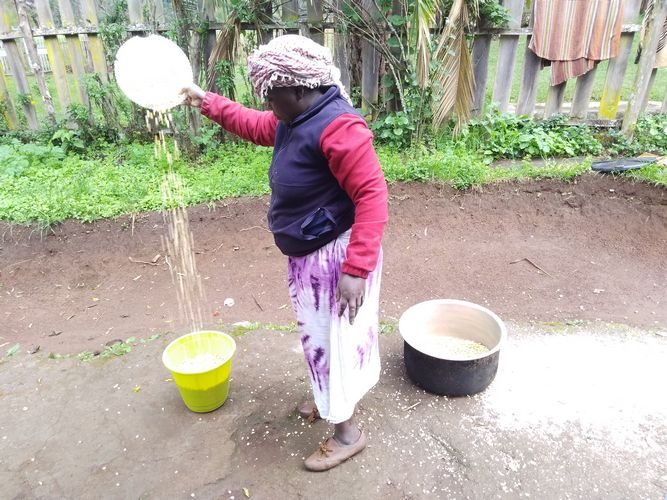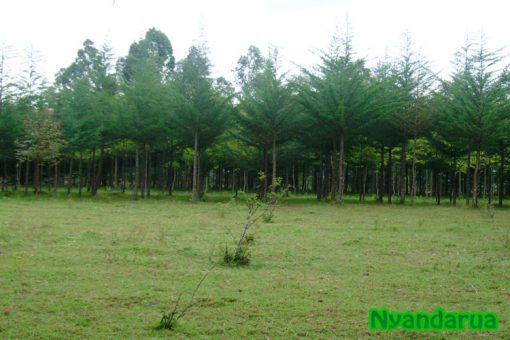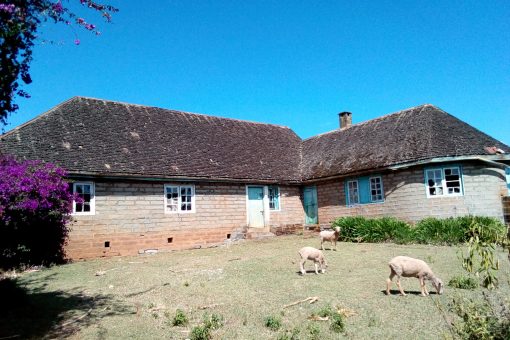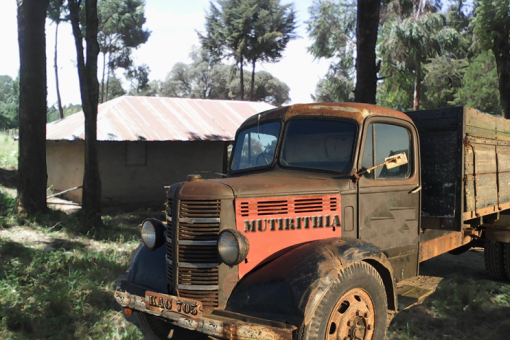Before the wheat was sold to the Cereal Board, there was more work to be done. There was no rest for the weary in OlKalou. We had to go through each bag and pick out anything that was not wheat grain. Weeds (thawani), wheat straw, pieces of twine (ndigi cia makongo), wheat grain that was still in its hulls (ngano itari ngonyore) and empty hulls (makore) that dropped back into the wheat during extraction, all had to be removed. That meant reopening each bag, pouring out the wheat on a tarp and picking out all the above mentioned undesirables. There were three ways of cleaning the wheat.
We had a huge flat “sieve” (gichungi) that was handled by two people. It was rectangular in shape, with a wooden frame all around it and a wooden piece dividing the middle. The sieve was approximately six feet long and three feet wide. Its bottom was fitted with a wire mesh, with holes big enough to allow wheat grain through, but nothing else. Equal amounts of wheat were poured into the two sections of the sieve. Like a seesaw, two people lifted the sieve simultaneously to maintain a leveled balance and avoid spills. The sieve was always over the tarp to catch the sifted wheat falling through the wire mesh. The two people rocked the sieve back and forth as wheat grains rained through the wire mesh onto the tarp with every motion until all the wheat fell through and the only things remaining on the sieve were the undesirables which were thrown out. The clean wheat was filled back into the bag, hemmed and put on a different stack that was ready for shipping to the Cereal Board.
Another way of cleaning the wheat was using the wind. We scooped up wheat in containers like basins or the Kikuyu tray (gitaruru). In a standing position, we put the filled containers over our heads and poured the wheat down slowly back onto the tarp in a bouncing motion, letting the wind blow out any undesirables which were generally lighter than wheat grains. This process needed repeating a few times, especially if the wind was not gusting strongly. Women also used the wind method but in a different style. Our mother filled wheat in her gitaruru and skillfully tossed the wheat up in the air, letting the wind blow out the undesirables. If the wind was not strong enough, she blew her breath into the wheat with every toss and that sent the debris flying out. This was the same method women everywhere used routinely to clean cereal for cooking; cereals like maize, beans and rice, making them experts in tossing grain in the air without ever dropping a single one. My mother did her best to teach me how to toss cereal in a gitaruru, but I never mastered the skill to her level. But I do alright.
Another way of cleaning the wheat was simply sitting next to a pile of wheat, sectioning it bit by bit with your hands and going through small amounts at a time. Halfway through, it appeared like you had two mountains with a valley in between. As you continued working through the wheat, the cleaned pile got bigger and bigger until finally you had only one cleaned pile of wheat ready to be bagged. The cleaning process took days, even weeks before going through the entire 100 bags. The cleaning had to be thorough, the only standard acceptable to my parents.




